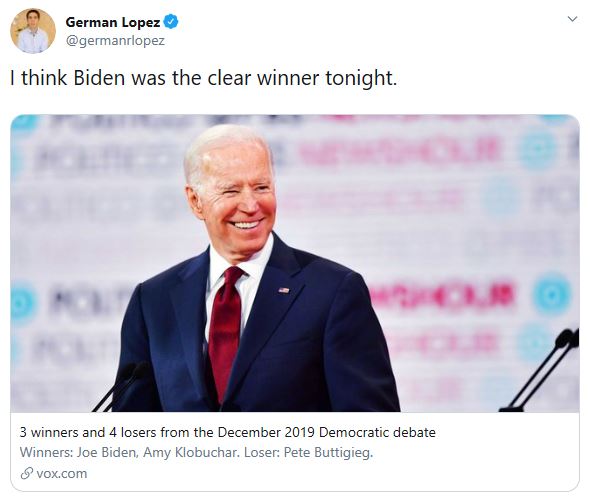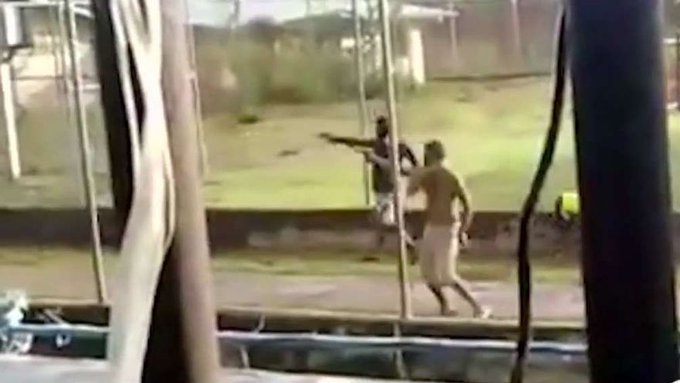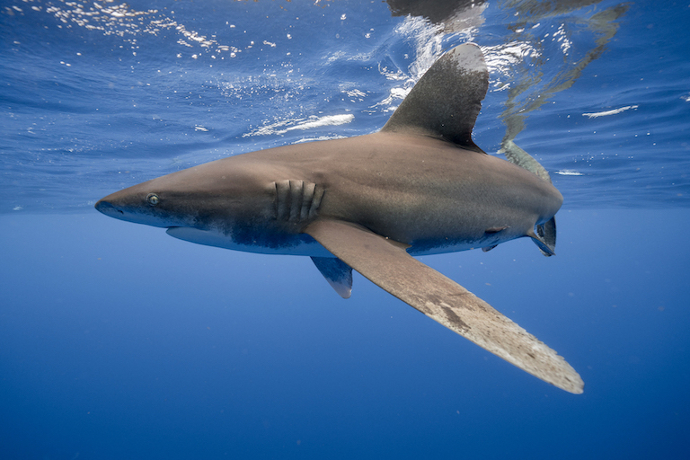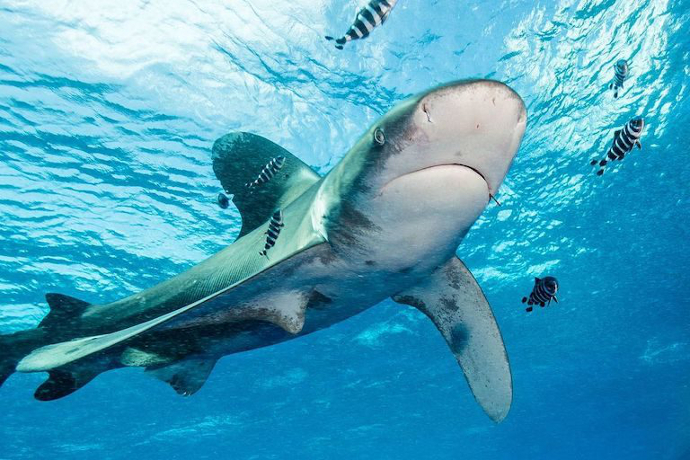… and some of the reactions:







Contact us by email at fund4thepanamanews@gmail.com
These links are interactive — click on the boxes







Contact us by email at fund4thepanamanews@gmail.com
These links are interactive — click on the boxes
Contact us by email at fund4thepanamanews@gmail.com
Han pasado 30 años desde la sangrienta invasión norteamericana del 20 de diciembre de 1989 y, pese a que ya no se pueden esconder los centenares de asesinados, los miles de heridos, las decenas de miles que quedaron sin hogar, los multimillonarios daños a nuestra economía, los gobiernos panameños siguen sin reconocer la fecha como un verdadero Día de Duelo Nacional.
El gobierno del PRD, presidido por Laurentino Cortizo, ha decretado un limitado Día de Duelo Nacional el 20 de diciembre de 2019, sin que esto incluya cierre de oficinas públicas y privadas. Si bien este decreto es un paso en la dirección correcta, que obedece al clamor generalizado exigiendo esta medida elemental, es a todas luces insuficiente porque: está referido exclusivamente a la conmemoración de este año, no es permanente, no reforma el Código de Trabajo, que es el que regula esta materia, ni obliga al estado a realizar eventos conmemorativos.
En este 30 aniversario del aciago acontecimiento, el responsable político de que siga sin declararse el duelo nacional es el partido oficialista, el PRD, que siempre juega a la ambigüedad, pues algunos de sus dirigentes pretenden reivindicar la fecha mientras otros siguen haciendo reverencias al gobierno norteamericano, como los recientes ejercicios militares de Estados Unidos en Panamá.
Con mayoría absoluta en la Asamblea Nacional, el PRD no tiene ninguna excusa para no haber aprobado el día de duelo mediante ley, como la que ha propuesto la diputada independiente Walkiria Chandler D’Orcy.
Solo se puede comprender la negación de los gobiernos a reconocer la fecha como verdadero Duelo Nacional porque hacerlo pondría en evidencia los crímenes de lesa humanidad cometidos por el imperialismo norteamericano en nuestro país, lo cual sería el primer paso hacia el respaldo a las demandas de las víctimas, el reconocimiento del fallo de la Comisión Interamericana de Derechos Humanos contra el gobierno norteamericano al respecto (CIDH es el informe No. 121/18 Caso 10.573), y un reclamo oficial del estado panameño a los Estados Unidos.
Reconocer el Día de Duelo Nacional también implica un cuestionamiento al régimen político surgido de esa sangrienta invasión, el cual no es ninguna “democracia” como han querido hacer ver, sino un régimen antidemocrático, oligárquico y corrupto. Régimen que, en buena medida es continuidad de la dictadura militar anterior, la cual contó con el respaldo de los gobiernos norteamericanos casi que hasta el último día.
La Invasión del 20 de Diciembre de 1989, fue bajo la excusa de sacar a Noriega y para derrocar un gobierno militar que estuvo en el poder por 21 años y que este fue entrenado por ellos mismos (USA y CIA), en la antigua Escuela de las Américas existentes en Panamá.
La juventud actual, que no había nacido cuando aquellos hechos, debe ser consciente que el régimen partidocrático corrupto que repudia, nació en enero de 1990, impuesto por el Pentágono a los partidos que han gobernado desde entonces.
Reconocer el Día de Duelo Nacional, lleva a darse cuenta de que una de las razones para aquella agresión contra el pueblo panameño, era imponernos un riguroso plan de reformas neoliberales que se formalizó 6 meses después del 20 de diciembre con un llamado “Acuerdo de Donación” por el cual se obligaba al país a acatar las órdenes del FMI y el Banco Mundial, lo cual se ha seguido ejecutando gobierno tras gobierno.
Reconocer el Día de Duelo Nacional obliga a reflexionar de que otro de los objetivos de aquella agresión fue la de burlar y neutralizar el completo cumplimiento de los Tratados del Canal de 1977, Torrijos-Carter, incumpliendo la promesa del “uso más colectivo posible” para imponernos en 1994 un título constitucional que enajena la administración del canal al pueblo panameño y entrega su junta directiva a una oligarquía corrupta y lacaya de los yanquis.
Reconocer el Día de Duelo Nacional implica darnos cuenta de que no hemos alcanzado el sueño de completa soberanía e independencia nacional por el que lucharon nuestros mártires, pues desde 1999 se vienen imponiendo Acuerdos de Seguridad ilegales a espaldas del país por el cual las tropas norteamericanas siguen en el Istmo de manera más sutil con la excusa del combate al narcotráfico.
El Polo Ciudadano invita a nuestro pueblo, a sus organizaciones populares y en particular a la juventud a continuar la lucha por exigir el 20 de diciembre un VERDADERO Día de Duelo Nacional, por denunciar los crímenes que se cometieron entonces, por solidarizarnos con las víctimas y sus familias, porque la invasión no es un hecho pasado, sino atentado contra nuestro país cuyas consecuencias todavía seguimos sufriendo 30 años después.
Today – December 198 – the World Health Organization (WHO) prequalified its first biosimilar medicine – trastuzumab – in a move that could make this expensive, life-saving treatment more affordable and available to women globally.
Breast cancer is the most common form of cancer in women. 2.1 million women contracted breast cancer in 2018. 630 000 of them died from the disease, many because of late diagnosis and lack of access to affordable treatment.
Trastuzumab – a monoclonal antibody – was included in the WHO Essential Medicines List in 2015 as an essential treatment for about 20% of breast cancers. It has shown high efficacy in curing early stage breast cancer and in some cases more advanced forms of the disease.
“WHO prequalification of biosimilar trastuzumab is good news for women everywhere,” says Dr. Tedros Adhanom Ghebreyesus, WHO Director-General. “Women in many cultures suffer from gender disparity when it comes to accessing health services. In poor countries, there is the added burden of a lack of access to treatment for many, and the high cost of medicines. Effective, affordable breast cancer treatment should be a right for all women, not the privilege of a few.”
The global average cost of trastuzumab from originator companies is $20 000, a price that puts it out of reach of many women and healthcare systems in most countries. The biosimilar version of trastuzumab is generally 65% cheaper than the originator. With this WHO listing, and more products expected in the prequalification pipeline, prices should decrease even further.
The medicine, supplied by Samsung Bioepis NL B.V. (Netherlands), was assessed by WHO and found comparable to the originator product in terms of efficacy, safety and quality. That means it is eligible for procurement by United Nations agencies and for national tenders.
Biotherapeutic medicines, which are produced from biological sources such as cells rather than synthesized chemicals, are important treatments for some cancers and other non-communicable diseases. Like generic medicines, biosimilars can be much less expensive versions of innovator biotherapeutics while keeping the same effectiveness. They are usually manufactured by other companies once the patent on the original product has expired.
A few biosimilars of trastuzumab have come to market in the last five years, but none had been prequalified by WHO before today. WHO prequalification gives countries the assurance that they are purchasing quality health products.
A recent study of breast cancer in sub-Saharan Africa found that of 1325 women surveyed in three countries, cancer treatment had not been initiated within one year of diagnosis for 227 (17%) women and for 185 (14%) women with stage I-III disease. Self-reported treatment barriers confirmed treatment costs as a major contributor to not receiving treatment.
WHO’s International Agency for Research on Cancer estimates that by 2040 the number of diagnosed breast cancers will reach 3.1 million, with the greatest increase in low- and middle-income countries.
“We need to act now and try to avoid more preventable deaths,” says Dr. Mariângela Simão, WHO Assistant Director General for Medicines and Health Products. “The availability of biosimilars has decreased prices, making even innovative treatments more affordable and hopefully available to more people.”
Contact us by email at fund4thepanamanews@gmail.com
These links are interactive — click on the boxes
Baseball had an exciting year — breakout stars, a major cheating scandal, a seven-game World Series.
And now it’s capping off the year with a disastrous idea from the owners. Led by the Houston Astros — the same Astros mired in scandals over cheating and domestic violence — Major League Baseball has proposed cutting 42 minor league teams all around the country.
Who’s on the chopping block? Teams from Quad Cities, Iowa and Williamsport, Pennsylvania, where the Little League World Series takes place every year, to Missoula, Montana and Orem, Utah.
These places have, in many cases, been a part of the fabric of baseball in America for over a century. The Vermont Lake Monsters, another team on the “hit list,” play in a stadium built in 1906, older than Fenway Park. The similarly targeted Hagerstown, Maryland Suns play in one built in 1930.
These teams have provided a way for folks in rural and underserved areas to see baseball and future major leaguers for a fraction of the price of traveling to an MLB city. And they’re a way to boost the communities they play in.
Compensation for these players is often ridiculously low — around the poverty line — and they don’t have a union like their professional counterparts. It’s a cutthroat and competitive environment, with only about one in ten minor leaguers making it to the majors. And with low per diems and intensive travel, it’s an exhausting endeavor.
These issues need to be addressed not only to ensure the survival of Minor League Baseball, but to help baseball itself thrive. Players aren’t going to become their best if they’re stuck on futons in host families’ homes, living off PB&J sandwiches.
But the solution is not to destroy the teams — and the local communities — who give them the chance in the first place. No wonder the proposal has been criticized by folks all over the political spectrum.
Senator Bernie Sanders wrote a letter to MLB Commissioner Rob Manfred protesting the move. And over 100 representatives — from Congressional Progressive Caucus leaders Mark Pocan (D-WI) and Jamie Raskin (D-MD) to Trump supporters Elise Stefanik (R-NY) and Greg Gianforte (R-CA) — signed onto a letter condemning the MLB’s hit list.
MLB has tried to justify the cuts in the name of cost savings, low attendance, and stadiums that fail to meet MLB standards. In reality, it’s rooted in greed and a desire for more profits — and it will backfire.
These teams employ 1,000 players and countless more workers, and the Minor Leagues saw over 40 million fans attend their games. At a time when the MLB is wringing its hands about attendance (now at a 16-year low while young fans are tuning in to other sports), eliminating this link to 42 communities would be deeply harmful.
Even so, major league teams in relatively modest markets like Kansas City are getting sold for $1 billion, and the MLB is making record revenues thanks to television deals. Meanwhile they have the gall to balk at requests for higher minor league salaries, while demanding minor league franchises pay for every part of their teams, which train those major leaguers.
It’s ridiculous. The MLB should be investing in these teams and players, so they’re not stuck on poverty wages and couches — and helping these historic stadiums endure for another hundred years. Baseball isn’t called America’s pastime for nothing, and these teams in locales all around the USA are a huge reason for that.
The MLB’s greed is wrong and destructive. Let’s build up the minor leagues, not cut them down.
[Editor’s note: If you think that this has little to do with Panama, learn more about the economics of baseball. One particularly harmful fact of life for Panamanian players is an unpublished agreement between Major League Baseball and the National Collegiate Athletic Association, by which US colleges and universities will not recruit or give athletic scholarships to young baseball players coming out of Latin America. There are many other issues related to the NCAA and student athletes, but the exclusion for baseball players does not apply to other sports. The option to develop baseball skills in a university setting and, whether or not making it to the majors coming away with a higher education, is closed to Panamanians in what amounts to a monopolistic and anti-labor business practice.]
Contact us by email at fund4thepanamanews@gmail.com
These links are interactive — click on the boxes
The Republic of Panama approaches the 30th anniversary of its worst December day ever — yes, there were winners, and losers who were giddy about having been on the winning side, but hundreds of innocent people were killed and a lot of the “non-innocents” who died in the invasion were patriotic soldiers, cops and militia members who died with their boots on, fighting for their country. Thug regimes like Tony Noriega’s, and those of some of his successors, get a lot of people to do their heavy lifting but by and large do not share the proceeds of their rackets.
And what kind of December is THIS? Yes, the 20 / 30 Telethon for the Hospital del Niño, all the Christmas concerts, kids ready to get out of school for a few months, mobs of holiday shoppers looking for that special gift, long lines for that at-cost Christmas ham from the government. And yet….
It’s a time of a weak economy. It’s a time when the politicians have annoyed more people than usual. It’s a time when a lot of people are looking for someone to blame. Behind the smiles, it’s a time of multiple headaches for President Laurentino “Nito” Cortizo Cohen.

As originally designed, the dictatorship’s constitution allowed a political party to not only purge a wayward member from its ranks, but also expel a deputy elected to the National Assembly from his or her seat in the legislature. That latter power was last successfully invoked in the Pérez Balladares administration to oust a deputy caught in an extortion sting. Eventually, though, he beat the rap and came back in a subsequent election as a member of another party.
The process of the political parties standing for nothing in particular has gone a long way since then, such that it’s kind of a misnomer to talk about any sort of party line. Still, the deputies of a party in power have been expected to back the president’s nominees.
Zulay Rodríguez Lu, a legislator from San Miguelito and president of the PRD Women’s Front, was crushed by Cortizo in the party’s presidential primary. Since the new administration took office in July she was elected vice president of the National Assembly and has pushed a package of legislation designed to move Panama into a generally intolerant direction much akin to what neofascists in Europe and South America are advocating. Cortizo has blocked her attempts to put stuff like the massive cancellation of citizenship for those Panamanians whose parents are or were foreigners into the constitution and a de facto ban on radio play of foreign music into the laws.
And when it came to the president’s nominees for Attorney General and suplentes for him and the Administrative Prosecutor, Rodríguez, joined by most of the independents, voted against both suplentes. She had special venom for Javier Caraballo, against whom she railed for being an unduly harsh prosecutor who, for example, would appeal bail decisions by judges like herself before she was thrown off the bench for against statutory norms granting bail to some suspected Colombian drug smugglers who then promptly disappeared.
In any case, the deputy knows history to the extent that it parties that hold the presidency generally lose it in the next elections. So is she about to leave for another party — Cambio Democratico? — or start her own neofascist formation? In any case, as a practical matter it seems the the Cortizo caucus in the legislature still has the votes to approve his appointees but it has shrunk by at least one.

There is a confluence of factors at play — drug smuggling routes that have shifted back through Panama, a bad economy that’s making some people think and act like there’s no tomorrow anyway, a sense of impunity for thugs with the right connections…. Shrinks, sociologists and police strategists will doubtlessly bring up other factors.
In any case, there is a public perception that violent crime is spiking. Depending on which statistics one chooses to present, that is or is not true. But the December 17 prison riot in La Joyita, where rival gangs battled it out with cutting and stabbing instruments, five 9mm pistols and three AK-47 assault rifles and left a death toll of 14 — THAT was a spike in violence.
That the firearms were in the prison was an indiction of police, guard and prison administrator corruption that’s long-standing. Which does not make it tolerable. Cortizo vows to get to the basic truths of what happened, and meanwhile he has fired the director and assistant director of the national prison system. He warns of more firings, and it’s likely that there are going to be some cops put behind bars for letting the weapons in.

National Police director Jorge Miranda surely knew that, but he was talking to TVN at the scene of a particularly gruesome murder. A woman in Pacora was beheaded by a man in her life. The WRONG man to take it, it may be easy to see in hindsight. And what had the chief just seen? We should all be aware that post traumatic stress often afflicts cops who have seen outrageous violence.
But violence against women is a pervasive fact, here and in a lot of other places. Woe to the cop who appears to shift the blame to the victim. Miranda’s televised remarks about how the dead woman chose the wrong man set off a firestorm of criticism, especially but not only from feminists. The following day the police issued a statement about how his words were misinterpreted, and that of course the killer is responsible.
But also that following day, the dismembered remains of a young woman were found near a bridge in Tocumen.

Yes, people with more education than most will make elaborate procedural arguments about why none of it is true. But the son of a magistate — NOT one of Cortizo’s appointees — gets house arrest when anyone else would get preventive detention, people will cut through all else with Occam’s Razor.
Add to that the unsurprising acquittal of yet another batch of Martinelli people in what appeared to be an overpriced and steered public contract by the unsurprising Judge Loaiza and an article of faith for a lot of Panamanians is reinforced.
A justice system and government that works for those who are connected and nobody else? They can smirk. They can set aside a million and a half bucks in public funds to campaign for constitutional “reforms” designed to leave all that in place. But in a referendum the choice will not be about who would screw us the least, but Yes or No. It’s putting the president and the entire system in a deep political hole that’s likely to be the lead story coming out of Panama in 2020.
Contact us by email at fund4thepanamanews@gmail.com
These links are interactive — click on the boxes
December 9 marked the 18th day of peaceful nationwide protests by labor unions, students, peace activists, Afro-Colombians, indigenous, victims, women, farmers negatively impacted by free trade agreements, and many other Colombians. As the demonstrations were launched, US organizations and activists pledged their support to the peaceful protests in a public statement. Days prior to the strike, the Duque administration implemented unnecessary security measures that sent the message that they wanted to squash the protests.
On November 19, the police raided and searched some 37 homes of activists, artists, and alternative media services. Twenty-one of the raids were declared illegal by Colombian courts. In an attempt to justify repression, the President and members of the Democratic Center Party publicly stigmatized the protestors, criminalizing the right to protest and incorrectly stating that there was a foreign influence driving the protests to destabilize the government. Given this initial response from the highest level of government, we felt compelled to speak out against possible attacks and abuses against protestors.
Two weeks later, we sadly see that our concerns were justified. Even though the majority of the hundreds of thousands of Colombians protested peacefully, they were met with a brutal response from the Colombian National Police’s Mobile Anti-Disturbances Squadron (ESMAD, a 3,300-member riot police unit founded in 1999). On November 22, a curfew was issued in both Bogota and Cali due to false rumors spread on social media that thieves—some of them Venezuelans—were taking advantage of the police being busy to attack people’s homes. These rumors caused panic and led to the formation of “para-police” patrolling the streets and fomenting fear and chaos. The government fueled xenophobia against Venezuelans by deporting 60 Venezuelans with no due process.
The next day, Saturday 23, the ESMAD worked methodically and violently to break up any peaceful gathering of protesters, apparently under an order “to disperse any demonstration that might block traffic.” Members of the ESMAD shot 18-year-old Dilan Cruz in the back of the head with a “bean bag” weapon, a “non-lethal” projectile intended, according to UN standards, to “be used in direct fire with the aim of striking the lower abdomen or legs of a violent individual and only with a view to addressing an imminent threat of injury to either a law enforcement official or a member of the public.” Multiple protestors caught the incident on video. Dilan died from his injuries on November 25. The coroner determined that his death was a homicide.
According to the coalition Defendemos la Libertad, made up of 60 organizations working together to conduct observation of social protests, over 400 cases of abuse at the hands of the ESMAD and other police were reported just between November 21 and 27. This includes 16 eye injuries caused by tear gas canisters and other projectiles, which are forbidden by Colombian police procedures and international law to be shot at protesters’ faces.
This is not the first time that actions taken by the ESMAD have resulted in death and injuries. Since its creation in 1999, the unit has killed at least 34 people. Their disproportionate use of force and brutal attacks against unarmed civilians in rural protests—especially those led by indigenous communities—have been denounced to authorities on numerous occasions.
To our knowledge, US public funds do not fund the ESMAD directly. However, many of the ESMAD’s weapons, including tear gas and “bean bags,” are purchased with the Colombian government’s own funds through US arms sales programs. Much of its materiel, for instance, comes from one Pennsylvania-based company, Combined Systems, Inc., which sells tear gas canisters and stun grenades to Colombia. We call on the State Department and the US Congress to place a moratorium on sales of crowd control weapons to Colombia until the ESMAD has either been replaced by a new force or undergone a full overhaul toward building a dramatically different, more rights-respecting culture and doctrine based on de-escalation, respect for peaceful protest, and minimal use of force. The US Embassy and State Department should support civil society’s rightful demands for peace, labor rights, safety for human rights defenders, and environmental protection. The Secretary of State’s reiteration of rumors that widespread social protests across the Americas are driven by Venezuelan and Cuban intervention rather than the real national concerns that lead people to protest in each country, including Colombia, is harmful.
Lastly, we call on the Duque administration to resolve these protests peacefully through a negotiation involving the broad leadership of the various sectors involved in the protests that leads to a deeper resolution of the issues driving this widespread social discontent. A thorough investigation of the killing of Dilan Cruz and other abuses taking place during the protests should be carried out in civilian courts. The Inspector General’s office (Procuraduria General de la Nación) and the Ombudsman’s Office (Defensoría del Pueblo) should be encouraged and permitted to play their crucial roles in issuing disciplinary measures for public officials and verifying and documenting citizen complaints. Finally, the Duque administration should ensure that the existing protocol for addressing social protest (Resolution 1190 of 2018 of the Ministry of the Interior) is employed at all times instead of completely ignoring it.
Sincerely,
Washington Office on Latin America (WOLA)
Witness for Peace Solidarity Collective
United Church of Christ, Justice and Witness Ministries
UNIAFRO
The International Institute on Race, Equality, and Human Rights
OXFAM America
Movement for Peace in Colombia, New York
MADRE
Latin America Working Group (LAWG)
Latin American Studies Association (LASA) – Colombia Section
Interdisciplinary Colombian Studies at University of New Mexico
Global Ministries of the Christian Church (Disciples of Christ) and the United Church of Christ
Colombia Human Rights Committee, Washington, DC
Colombia Grassroots Support, New Jersey.
Codhes
CIVICUS: World Alliance for Citizen Participation
Chicago Religious Leadership Network on Latin America
Center for Justice & International Law (CEJIL)
Amazon Watch
AFRODES USA
ACSN
Victoria Sanford, PhD – Director, Center for Human Rights & Peace Studies, Lehman College-NY
Sinclair Thomson – New York University-NY
Sandra Granobles – DC Government Educator
Ofunshi Oba Koso, Minnesota Yoruba Cuba Association- MN
Nicolás Sánchez – Department of Latin American Studies, Duke University
Nancy Appelbaum – Director, Latin American and Caribbean Area Studies Program, Binghamton University-NY
Michael Birenbaum Quintero – Chair, Musicology and Ethnomusicology Department, Boston University
Mary Roldán – Epstein Professor of Latin American History Hunter College, CUNY-NY
Margaret Powrer – Profesor of History, Illinois Institute of Technology
Luz M Betancourt, PhD., CUNY, Graduate Center-NY
Lirio Gutiérrez Rivera – Universidad Nacional de Colombia-Colombia
Lina Britto – Assistant Professor, Northwestern University- IL
Kiran Asher – Professor, University of Massachusetts-MA
Jonathan Fox – Professor, School of International Service, American University-DC
John C. Dugas – Kalamazoo College-MI
Joel Wolfe – Professor of History, University of Massachusetts
Jessica Srikantia, Associate Professor at George Mason University’s Schar School of Policy and Government-VA
James E. Sanders – Utah State University-UT
Gloria Monroy-DC
Gina McDaniel Tarver – Associate Professor of Art History, Texas State University-TX
Gabriel Rudas-Burgos – Professor of Hispanic Languages and Literatures, Stony Brook University
Felipe Gómez G – Professor, Carnegie Mellon University-PA
Fabian Prieto-Ñañez – Postdoctoral Researcher, Virginia Tech-VA
Erin K. McFee, PhD – The University of Chicago-IL
Danesis Arce – Afromedios
Constanza López – Associate Professor, University of North Florida-FL
Barbara Gerlach – Minister, United Church of Christ
Alexander Fattal – Assistant Professor, University of California, San Diego-CA

Contact us by email at fund4thepanamanews@gmail.com
These links are interactive — click on the boxes
This brightly colored tanager inhabits a swath from central Mexico to Ecuador. His diet consists of mainly of fruit and berries, which he was eating when I found him. These birds are seen in clearings, forest edges and secondary forests. It’s more of a lowlands bird on the Atlantic Side while plentiful between 1,000 and 4,500 feet above sea level in Chiriqui. Montijo Bay in Western Veraguas and the Bayano River Valley in Eastern Panama province are home to significant concentration, but you find them in the lower areas of Panama and Darien provinces in general. They move in small groups, sometimes mixed with birds of other species.
Esta tangara de colores brillantes habita una franja desde el centro de México hasta Ecuador. Su dieta consiste principalmente en frutas y bayas, que estaba comiendo cuando lo encontré. Estas aves se ven en claros, bordes de bosques y bosques secundarios. Es más un ave de las tierras bajas en la vertiente del Caribe, mientras que abunda entre 1,000 y 4,500 pies sobre el nivel del mar en Chiriquí. La bahía de Montijo, en el oeste de Veraguas, y el valle del río Bayano, en el este de la provincia de Panamá, albergan concentraciones significativas. Por lo general se encuentran en las zonas bajas de las provincias de Panamá y Darién. Se mueven en pequeños grupos, a veces mezclados con aves de otras especies.
Contact us by email at fund4thepanamanews@gmail.com
Contact us by email at fund4thepanamanews@gmail.com
These links are interactive — click on the boxes
The oceanic whitetip shark was reclassified as “critically endangered” by the International Union for Conservation of Nature (IUCN), citing “steep population declines” in all oceans. That represents two big steps toward extinction from the shark’s previous classification as “vulnerable,” which it had held since 2006.
However, that wasn’t enough to convince countries that fish for tuna in the western and central Pacific Ocean to step up protections for the species in that region, where scientists predict the sharks will disappear if current management practices don’t change.
Many scientists and conservation advocates were hopeful that the 16th meeting of the Western and Central Pacific Fisheries Commission (WCPFC), held from December 5 to 11 in Port Moresby, Papua New Guinea, would commit to new steps to boost the region’s population of whitetips (Carcharhinus longimanus). The multilateral body manages fisheries in the vast region, including the large and lucrative tuna fishery that accidentally kills tens of thousands of whitetips each year.
At the meeting, delegates finalized and adopted a new conservation and management measure for sharks, which may help other species. But the measure doesn’t offer any new protections for whitetips, and their particular plight in the region didn’t make it onto the agenda.
“The Commission’s annual meeting was the first real opportunity for the member states to act on these alarming findings,” said a statement issued by the NGO WWF after the meeting. “Unfortunately, they did not rise up to the challenge. The tragic situation of the oceanic whitetip shark was not substantially addressed during the meeting, with no opportunity to even consider a much-needed recovery plan as a solution.”

Oceanic whitetips were once among the most common pelagic shark species in the tropics. As apex predators, they play a crucial regulatory role in marine ecosystems, maintaining balance and diversity in the species below them in the food web. Sharks are also culturally important for many Pacific peoples, often seen as manifestations of ancestors, deities or guides for ocean-goers.
But a recent stock assessment commissioned by the WCPFC revealed that the oceanic whitetip population in the western and central Pacific Ocean has declined by about 95%. The assessment concluded that if new measures aren’t taken to protect the sharks, the population will become regionally extinct.
Why? The region’s oceanic whitetips are “overfished and undergoing overfishing,” according to the assessment. And it’s mostly by accident.
Whitetips are often caught by longliner boats fishing for tuna, because they swim close to the surface and are attracted to the longliners’ lures. Less commonly, they’re caught by purse seiners, which enclose all the fish in an area in a large net that’s drawn tight at the top and bottom. Whitetips are considered bycatch, a term for species that are caught accidentally, and to date there are no catch limits in place for them.
Like most sharks, whitetips take a long time to reach sexual maturity and have small litters of pups every year or two, so they are vulnerable to overfishing. “It’s very, very simple, we’re taking them out faster than they can replenish themselves,” Demian Chapman, a shark conservation expert at Florida International University, told Mongabay.
Demand for whitetips’ large fins, which fetch high prices as an ingredient in shark-fin soup, a prized dish in many East Asian countries, has also contributed to whitetips’ decline. To mitigate this, in 2011 the WCPFC enacted a “catch and retention” ban, making it illegal for fishers to intentionally catch whitetips and requiring them to immediately release any they catch accidentally — with their fins still attached. Then, in 2013, parties to the Convention on International Trade in Endangered Species of Wild Fauna and Flora (CITES) passed restrictions that severely limited the legal trade of whitetip fins.
The stock assessment found no evidence that fisheries are currently targeting whitetips in the region. “But we know that there is still a fin trade of this species, for sure,” said Chapman, who has researched the trade in Hong Kong and China, “and probably a good amount of it is illegal.” This suggests that some fishers are still opportunistically selling the fins of the sharks they catch.
According to the assessment’s authors, the WCPFC’s existing measures “may have had a positive impact on stock status by decreasing fishing mortality.” But they also acknowledged that some fishers and observers had not updated their identification, recording, and surveillance practices since the 2011 catch and retention ban took effect, so some whitetip catches may have gone unrecorded or been incorrectly identified, compromising the data used in the assessment.
Keeping more whitetips alive remains a “pretty major conundrum,” said Chapman, even for researchers at the forefront of the issue. “The problem is that a decent proportion of the whitetips still die when they’re caught,” he said.
He identified three ways to boost the survival rate of the species. The first is keeping sharks from getting stuck on longlines. Discouraging them from taking the bait, for example by attaching magnets to the hooks, which sharks find irritating, is one option. Ensuring that lines are made from material that sharks can bite through to free themselves, such as nylon rather than wire, is another.
The second is to maximize the survival of whitetips that do get hooked by training fishers to free them safely. Chapman said that steps such as keeping sharks in the water while they’re being released and cutting the line right at the hook so they don’t swim off trailing gear have made a big difference for whitetips in Atlantic tuna fisheries. Leaving longlines in the water for shorter time periods is also effective, he said.
“Whitetips are quite tough,” said Chapman, “so when they get hooked, they can handle struggling on the line for a while. There’s definitely a relationship between how long the longline was soaked and how many whitetips come up dead or in very poor condition.” The downside is that shorter soak times entail more work for fishers and may also reduce tuna catches.
The third and most radical method Chapman identified is to simply avoid setting longlines in places where whitetips are relatively common. That’s also a challenging prospect for tuna-fishing nations, he said, “because the whitetips are pretty closely correlated with the oceanographic features that would also attract tuna.”
But economic impacts like these are no reason not to act, said Chapman.
“We’ve left it so long with these species that now it’s pretty drastic. This is the problem: we tend not to act until the grim reaper is on the doorstep, and that’s where we find ourselves with the whitetip in this region,” he said. “These measures are going to hurt, probably, but this is because we kicked the can too far and let them drop and drop and drop, and now it’s critical.”
Andy Cornish, who leads WWF’s global shark and ray conservation program, also emphasized the urgency of the situation. “With the population pushed to the brink of extinction, there is no time to waste,” he said in the organization’s closing statement. “WCPFC nations will not have another chance to introduce new measures to start recovering the population until the next Commission meeting in a year’s time.”
At the meeting, WCPFC took a number of new measures to better manage fisheries in the region, such as adopting voluntary guidelines for how fishers should safely free seabirds caught on longline hooks; adopting a work plan to boost albacore stocks; banning the catch and retention of manta and other mobula rays; and adopting a resolution to consider the impact of climate change on its work.

Monica Evans is a freelance writer based in Aotearoa, New Zealand, who specializes in environmental and community development issues. She has a master’s degree in development studies from Victoria University of Wellington. Find her at monicaevans.org.
Contact us by email at fund4thepanamanews@gmail.com
These links are interactive — click on the boxes